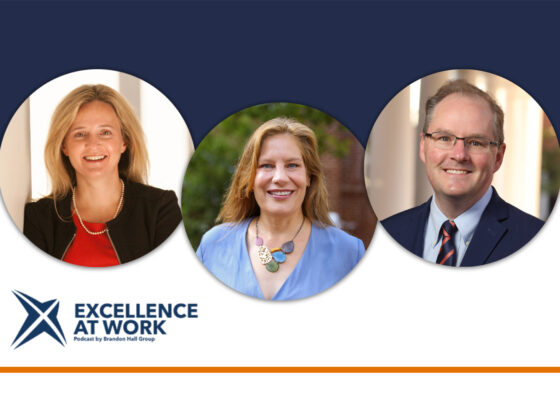Organizations that are at the forefront of innovation and setup to respond quickly to change are thriving, while organizations that are not as nimble are falling behind. Thanks to advancing technology and continuous disruption, change and innovation are happening more rapidly than ever before, leaving leaders with unprecedented levels of complexity to navigate.
Our award-winning Darden faculty members, who also teach in Executive Education & Lifelong Learning programs, share best tips and practices on how leaders can create value and drive growth for their organizations in a time of great uncertainty.
Acting as a Catalyst for Growth at Your Organization
Professor Jeanne Liedtka and her co-authors of The Catalyst: How You Can Become an Extraordinary Growth Leader point out that even in large, established organizations, entrepreneurial skills and mindsets are critical for surviving — and thriving — in uncertain times.
They discovered five prime lessons from interviewing 50 growth leaders, or “catalysts,” that contributed to producing value for their organizations.
- For leadership, look in, not up.
- Partner with co-creators to break through bureaucracy.
- Reframe the question.
- Start with small bets for big results.
- Be a pragmatic idealist.
Read more about these lessons to implement at your organization. Liedtka leads Darden’s Design Thinking and Innovation Specialization program.
Innovating Through Diversity, Equity and Inclusion
 Black professionals remain acutely underrepresented at senior levels, and many speak of a racial glass ceiling that prevents their career progression. How can organizations design diversity and inclusion programs and practices that promote Black inclusion?
Black professionals remain acutely underrepresented at senior levels, and many speak of a racial glass ceiling that prevents their career progression. How can organizations design diversity and inclusion programs and practices that promote Black inclusion?
Professor Martin Davidson states that regardless of how well-intentioned diversity and inclusion efforts are, the impact of these efforts depends on how they’re viewed. So, it is key for organizations to shape how Black professionals come to perceive and experience inclusion programs — and it can be done.
To design real race-intelligent inclusion, organizations must eradicate the idea that race is a barrier. How can this be done? Davidson highlights facilitating communication about race, building knowledge about race and developing a learning culture.
Learn more about how to take these actions toward real race-intelligent inclusion. Davidson teaches in Managing Individual & Organizational Change, the Women in Leadership Program and The Executive Program.
Embracing Disruption to Solve Complex Problems
 Today, disruption has become all the rage in business. Faced with an overwhelming number of advances in digital technology — from data analytics and artificial intelligence to automation and blockchain — business leaders are struggling to disrupt, rather than be disrupted.
Today, disruption has become all the rage in business. Faced with an overwhelming number of advances in digital technology — from data analytics and artificial intelligence to automation and blockchain — business leaders are struggling to disrupt, rather than be disrupted.
Professor Michael Lenox highlights that while there is rapid disruption happening, there is a backlash against disruption occurring at the same time. He points out that disruption is natural and often ethically necessary, “Only by creating new technologies, products and services that replace the old, can we advance society and improve the human condition.” Much of Lenox’s recent work is around disruption and its impact on climate change and promoting sustainable business practices.
So how can you shift your own mindset on disruption? Read more about why Lenox encourages leaders to embrace disruption for positive change and solving complex problems. Lenox co-leads the Strategy Essentials Specialization and teaches in Introduction to Digital Transformation, and the Data Science for Business Strategy program series.
If you’re considering an Executive Education & Lifelong Learning program, connect with a concierge to help you find the right program or certificate path to fit your development needs and career goals.





